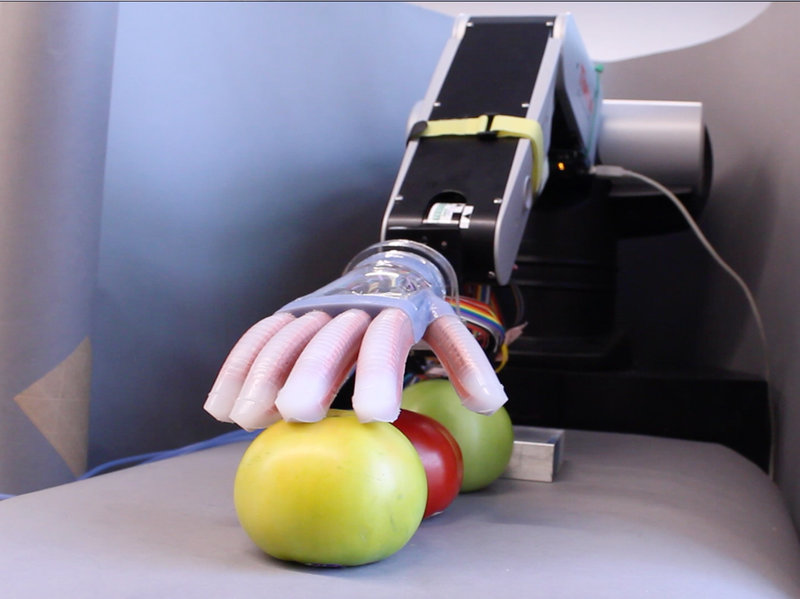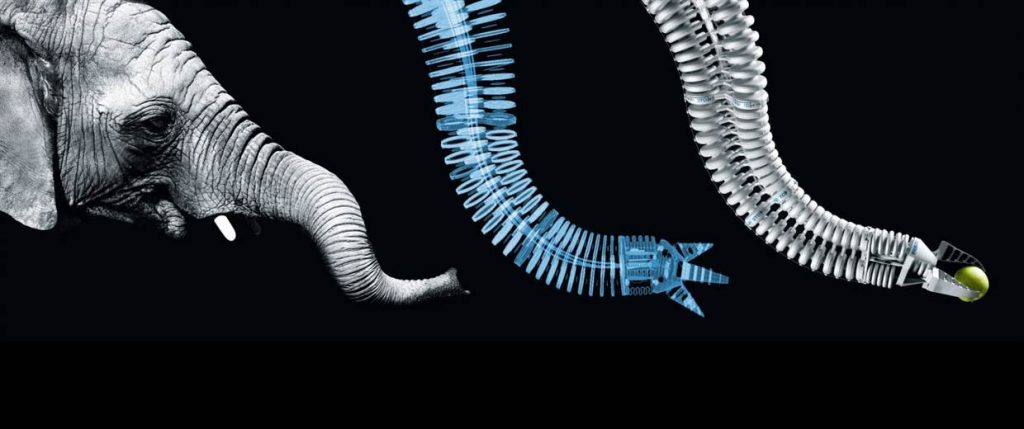New research describes a novel 3D printing technique for the production of smart materials that may find use in soft-robotics and advanced medicine.
In a recent academic paper the, “striking phenomena” that “can be produced by embedding magnetic particles into polymer with designed patterns,” are described in detail. These phenomena include smart materials with, “tunable elastic properties, giant deformational effects, high elasticity, anisotropic elastic and swelling properties, and quick response to magnetic fields.”
As previously reported by 3D Printing Industry, investigations into smart and meta materials are increasingly using 3D printing techniques.
Smart materials have application in areas including, “controlled drug delivery systems, diagnostic medicine, muscle-like soft linear actuators, biomimetic devices, separation techniques, high-density memory devices, spintronic, actuators for robots, elastomer bearings and vibration absorbers.”

The challenge of making smart materials
However, to manufacture smart materials is a challenge for traditional techniques: which is why the researchers used SLA 3D printing to tackle a core difficulty, “the mixing of particles and liquid resin,” whereby improper dispersion or agglomeration occurs.
The scientists experimented with nano- and micro-sized ferromagnetic particles, “deposited in liquid polymer by using a programmable micro-deposition nozzle.”
Using an external magnetic field, the researchers could control where the magnetic particles were concentrated. With this technique the academic paper reports that fabrication of, “material intelligence” is possible. This method of 3D printing is called Magnetic Field-assisted Projection Stereolithography (M-PSL).

How to 3D print with Magnetic Field-assisted Projection Stereolithography
To start, the M-PSL technique follows the conventional method for 3D printing, CAD software is used to generate a model that is then sliced and printed layer-by-layer with an SLA 3D printer. However, if a particular “layer requires magnetic particles, a programmable pumping system and a micro-nozzle are used to deposit magnetic particle solution into the liquid resin vat.”
The volume of deposited magnetic particle is precisely controlled by the programmable pumping system, and particle filling patterns and ratios are determined by the external magnetic field. Because particles are blended into liquid resin in situ, fast build speeds, local magnetic intelligence, and heterogeneous properties could be achieved easily.
The researchers constructed a 3D printer to perform their experiments. The resulting M-PSL testbed consists of an “imaging unit, a resin vat that has optic clear bottom surface, a linear actuator that elevates the build platform, two linear stages used for sliding the resin vat, a magnet that is mounted on a rotation stage, and a controller that is able to control four axis.”
Experiments were conducted using several different photopolymer resins, 3DM-ABS from 3D Materials Inc., E-shell 600 from EnvisionTEC, and FLGR01 from Formlabs.
To test the process an impeller, a two-wheel roller and a switch were 3D printed as proof-of-concept. The researchers found that, “composite product with particles filled in the desired areas can be successfully fabricated using the proposed M-PSL process.”

Areas for future research
Three areas for future research are highlighted by the authors of the study. First, exploration of methods for greater accuracy regarding particle deposition. Secondly, document the “relationship between magnetic particle filling parameters, including filling rate, patterns, and orientations, on the macroscopic performance of the fabricated composite.” Furthermore, the researchers intend to use the technology for the production of smart machines and designs of greater complexity.
The full research paper from Lu Lu, Ping Guo and corresponding author Yayue Pan is published in the Journal of Manufacturing Science and Engineering. The researchers performed the work at the Department of Mechanical and Industrial Engineering, University of Illinois at Chicago and the Department of Mechanical and Automation Engineering, The Chinese University of Hong Kong, Hong Kong, China SAR.
To stay up to date with the latest 3D printing research, subscribe to our newsletter and follow our active social media channels.
Featured image shows a soft-robotic octopus. Credit to Jennie Hills, London Science Museum.



